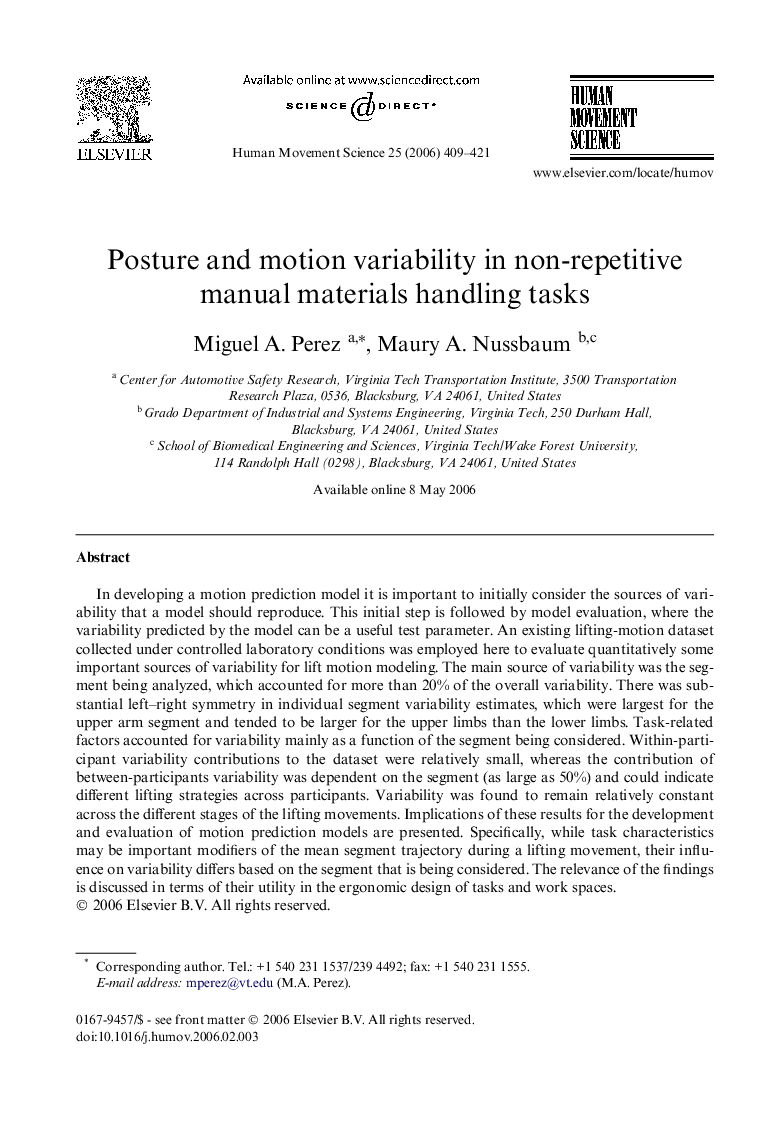| Article ID | Journal | Published Year | Pages | File Type |
|---|---|---|---|---|
| 928904 | Human Movement Science | 2006 | 13 Pages |
In developing a motion prediction model it is important to initially consider the sources of variability that a model should reproduce. This initial step is followed by model evaluation, where the variability predicted by the model can be a useful test parameter. An existing lifting-motion dataset collected under controlled laboratory conditions was employed here to evaluate quantitatively some important sources of variability for lift motion modeling. The main source of variability was the segment being analyzed, which accounted for more than 20% of the overall variability. There was substantial left–right symmetry in individual segment variability estimates, which were largest for the upper arm segment and tended to be larger for the upper limbs than the lower limbs. Task-related factors accounted for variability mainly as a function of the segment being considered. Within-participant variability contributions to the dataset were relatively small, whereas the contribution of between-participants variability was dependent on the segment (as large as 50%) and could indicate different lifting strategies across participants. Variability was found to remain relatively constant across the different stages of the lifting movements. Implications of these results for the development and evaluation of motion prediction models are presented. Specifically, while task characteristics may be important modifiers of the mean segment trajectory during a lifting movement, their influence on variability differs based on the segment that is being considered. The relevance of the findings is discussed in terms of their utility in the ergonomic design of tasks and work spaces.
